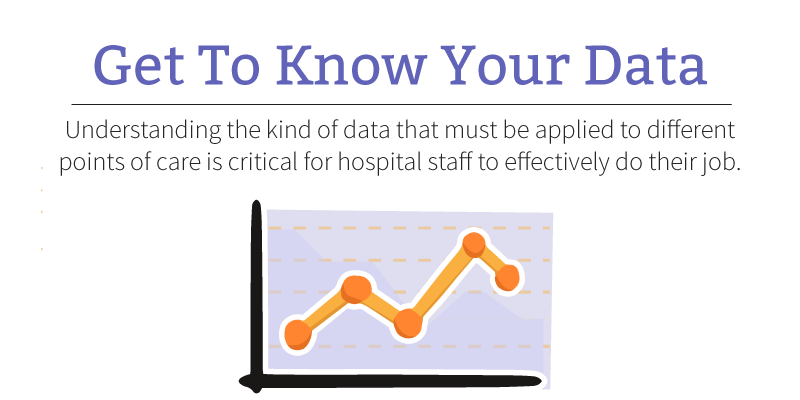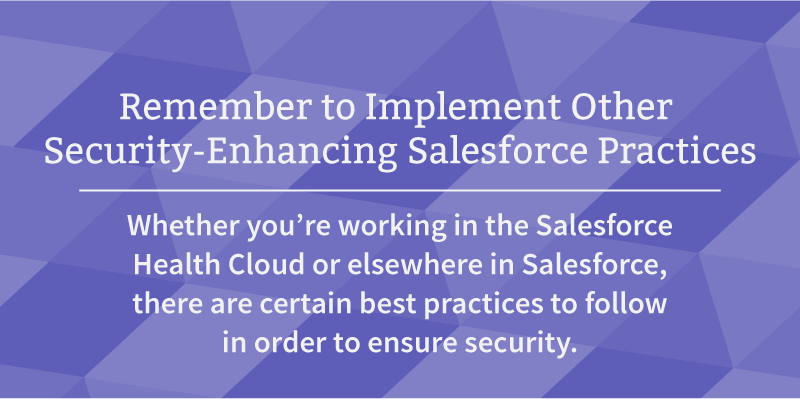
1.) Understand Health Care Compliance Regulations
HIPAA compliance will never be solved by a single piece of technology. It is an aggregation of technology, processes, user training, auditing and culture. Salesforce may be part of the solution, as it complements standard Practice Management applications such as Epic and Cerner.
Regardless of technology, each healthcare service is responsible for its own compliance and will have additional work to ensure it. Providers should have serious questions about data security, data storage in the cloud, data encryption, key management and handshakes between different application systems. The answers for each provider boil down to their trust in the solution, their priorities and appetite for joining the wave of change that is taking place in healthcare industry. Read more Summa expert advice and considerations on HIPAA compliance here.
2.) Develop an Effective Data Governance Program
At Summa, we worked with a client in the home delivery pharmacy space. The team determined that this client lost an average of $1,000 per bad address in their system. This bad data had administrative costs due to the returned medication, product costs due to the forced discarding of the returned medication and customer health costs due to the additional patient risk associated with medications not arriving on time.
Preventing or reining-in these costs requires data governance, in other words, identifying and upholding data definition, data integrity and related standards.
Here are five essential steps in getting started on a data governance initiative that will achieve the results you want.
- Understand your legal and regulatory environment.
- Identify your requirements for data accuracy, precision, grain and quality.
- Plot your data flow, where it is gathered and how it is used to further your organizational strategy.
- Standardize your terminology and data classification system.
- Assemble a balanced team.
For more detailed information on developing a data governance initiative to achieve the results you want, consult this Summa blog post on Data Governance.

3.) Get to Know Your Data Inside and Out
Understanding the kind of data that must be applied to different points of care is critical for hospital staff to effectively do their job. Analyzing the types of data which must be presented and the processes which adhere to requirements–and understanding how it impacts the value of care the patient receives–are core concepts of Just-In-Time (JIT) level design.
When applied correctly through quality analysis, JIT and other continuous improvement methodologies can be used to better analyze a patient’s care process throughout their health lifecycle while also minimizing hospital’s process variability. Quality processes and data workflows ensure a standardized level of care, ultimately minimizing hospital risk and error; alleviating the chance for more uncommon diseases to jeopardize the quality of care during the most extreme of circumstances. Read more about data organization and the importance of the interoperability and quality process surrounding EHRs on the Summa blog here.
4.) Get Familiar with which Features Salesforce Health Cloud Comes With Out-of-the-Box
At baseline, Salesforce comes with a number of security features. Some of them need to be turned on or configured to your needs (ex: choosing if and when to logout “idle” users), whereas others are standard out-of-the box (ex: requiring secure connections and limiting access to certain IP ranges). Read more Summa advice about configuring Salesforce Health Cloud security features here [not yet published, will add in link once published].

5.) Remember to Implement Other Security-Enhancing Salesforce Practices
Whether you’re working in the Salesforce Health Cloud or elsewhere in Salesforce, there are certain best practices to follow in order to ensure security. They must not be forgotten just because Salesforce Health Cloud is a new installation or feature. These practices include not only developing breach plans, but also training staff regarding HIPAA and making sure backups are maintained off platform. For more general security-enhancing Salesforce practices that can be utilized in Salesforce Health Cloud.
In Summary
Summa's no stranger to the healthcare world. We've created solutions for large integrated payor-providers, small start-ups and beyond, and we're passionate about finding strategies and tools specially tailored to this intricate, exciting industry.
Summa boasts deep experience in creating fast, flexible, reliable and secure connectivity between cloud, on-premises, new and legacy core applications, as well as IoT and mobile devices. As both the implementation partner and the customer engagement solution architect for our clients, we achieve business results using Marketing, Sales and Service Clouds and other platform components of Salesforce.com. In 2015, we won the Salesforce.com Partner Innovation Award for Non-Profit Success for our work innovating new fundraising, donor and volunteer management solutions for The United Way of Southwestern PA. Plus, Salesforce.com is one of Summa's fastest-growing practice areas. As Gold Partners, we're excited to do more, excel more and produce more transformative solutions for our clients.




